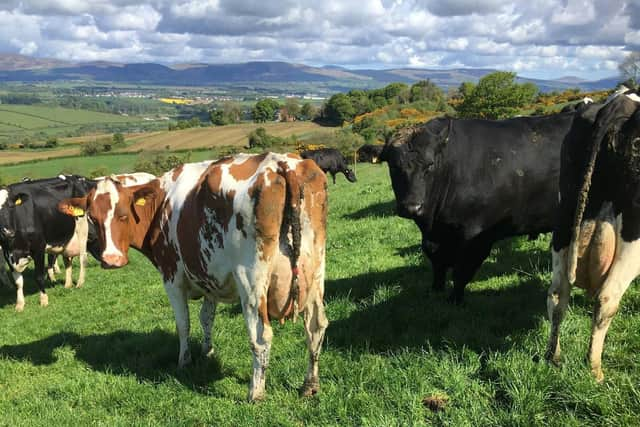Spring fertility assessment in autumn-calving herds- advice
and live on Freeview channel 276
Now is a good time to assess the previous winters’ breeding results in autumn calving herds, advises Dr David Mackey, Dairying Adviser at the College of Agriculture, Food and Rural Enterprise (CAFRE).
For the majority of autumn-winter calving dairy herds, turnout is often the time the bull is turned into the cows to sweep up those not already in-calf.
Advertisement
Advertisement
Many dairy farmers conduct routine fertility scanning, often on a weekly, fortnightly or monthly basis through the main part of the breeding season. David suggests: “For those dairy farmers that don’t normally scan their cows, after turnout is one of the key times to assess pregnancy status to identify cows not in calve.”


Cows can be scanned from around 28 days after service and scanning from around 60 days can even be used to establish the sex of the calf. The majority of cows in autumn calving herds should now be settled in calf and a quick analysis of service records can help to establish the conception rate of the herd.
Ignoring cows never served or those served in the last month, conception rate is simply the number of cows confirmed in calf over the total number of services conducted by either AI or natural service. Conception rates vary widely between herds, typically averaging around 40% but with widespread use of positive fertility bulls, together with good nutritional management, conception rates are tending to increase again.
Cows in the CAFRE Greenmount dairy herd are scanned every Friday morning by the local vet during the breeding season. Pre-breeding checks are conducted on cows from around a month before the start of the breeding season, which currently begins on the 14th December.
Advertisement
Advertisement
Pre-breeding checks are conducted at approximately 30-days post calving and cows are scanned again at around 30 and 80 days after service. While many farmers don’t conduct a second pregnancy diagnosis at 80-100 days post service, (milk sample or scan), this pregnancy diagnosis is important, as it helps to detect the small proportion of cows with early foetal loss at 45 to 90 days, that would otherwise be assumed to still be in calf.


While it is good to run a bull with cows to sweep up late calving cows and repeat breeders, it is important to set a date for his removal each year. At CAFRE Greenmount, the bull has traditionally been taken out in mid-July with the final PD conducted in early September however in the last few years he has been taken out in mid-June, to tighten up the calving pattern.
Further tightening of the Greenmount herd calving pattern is planned in the next couple of years to reduce the calving season down to approximately 16 weeks.
David concludes: “Now is a good time to take stock of the breeding season so far, since the majority of cows should be back in calve and if you want to tighten your calving pattern, remember to remove the bull from the cows!”